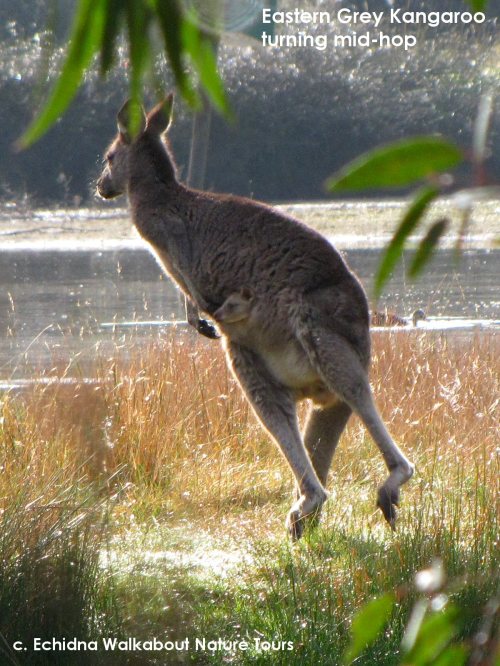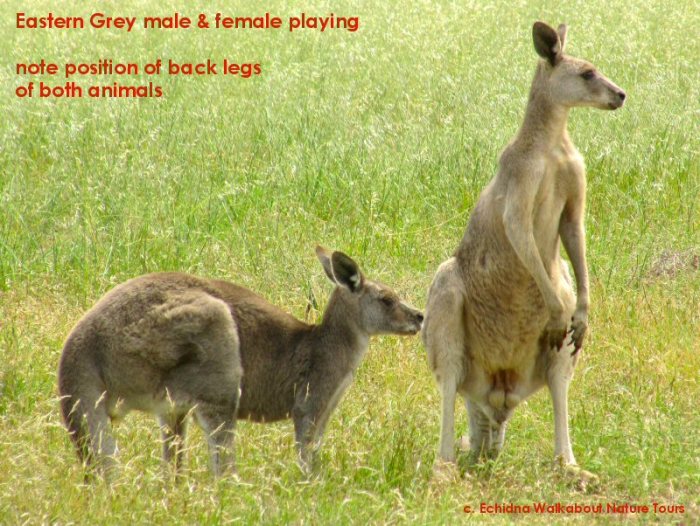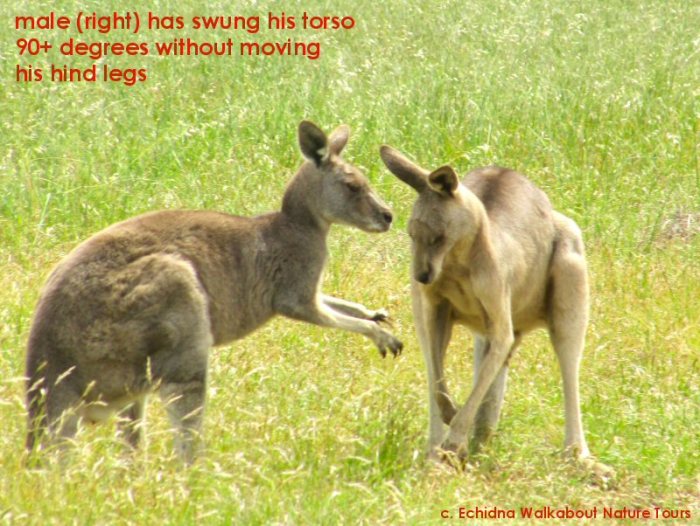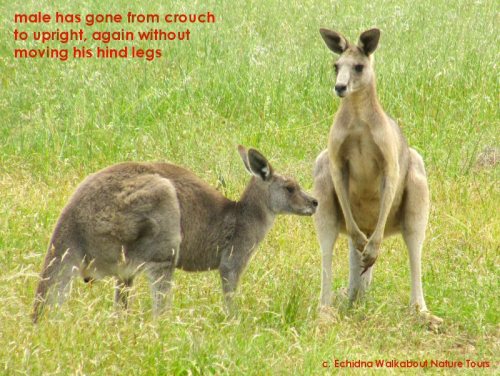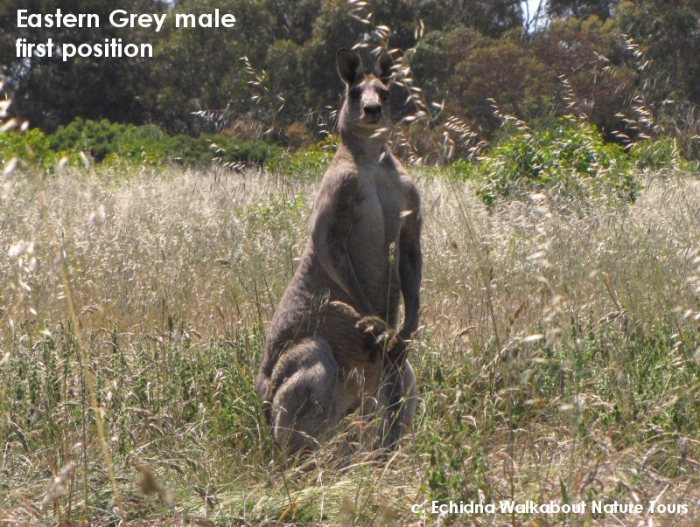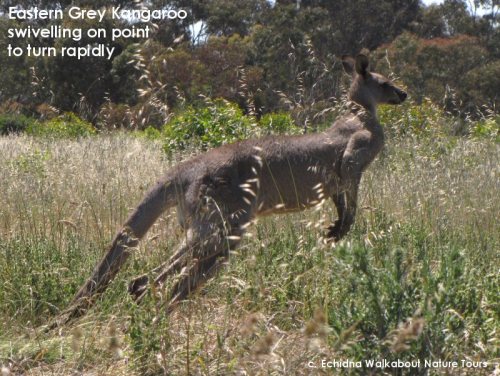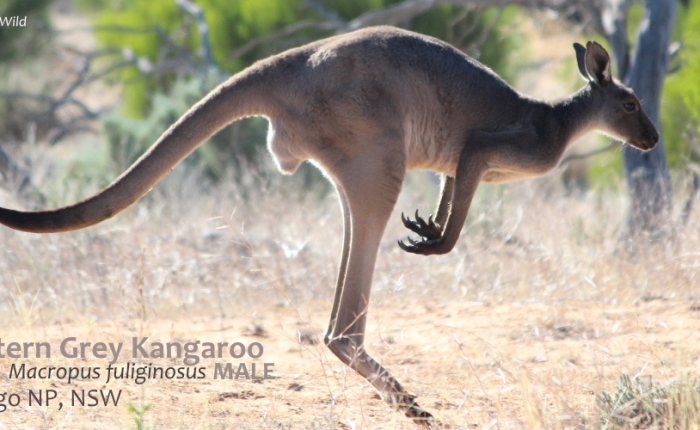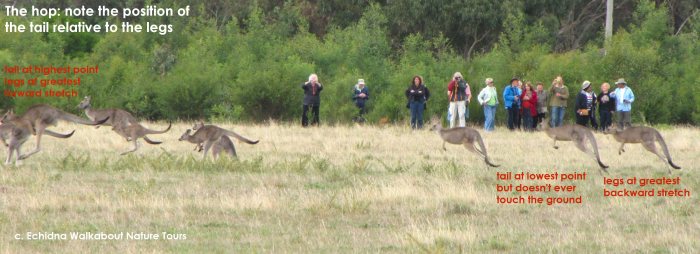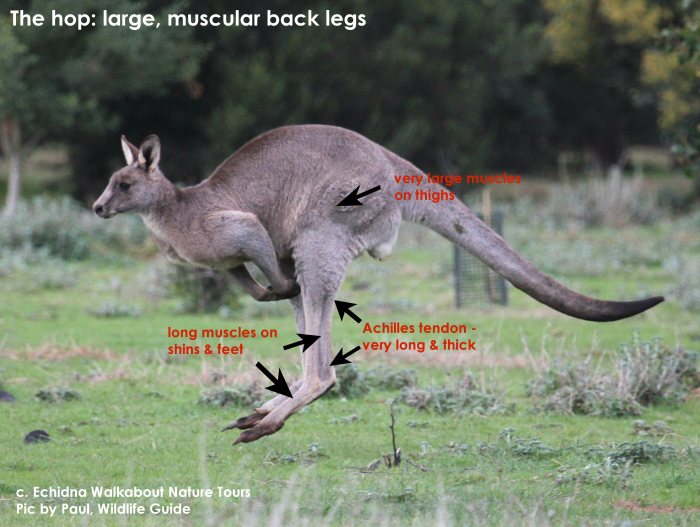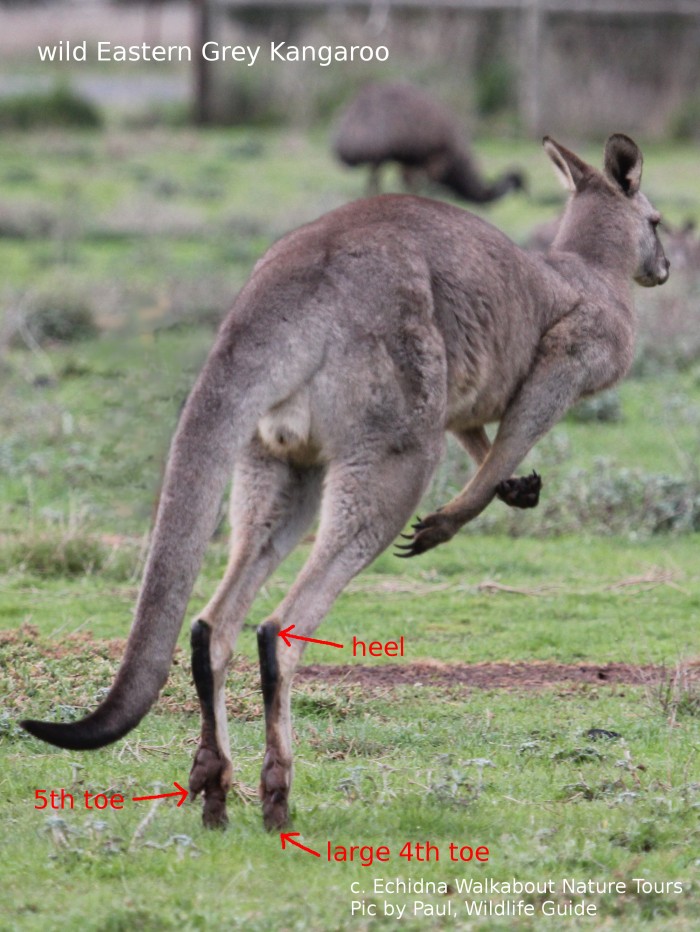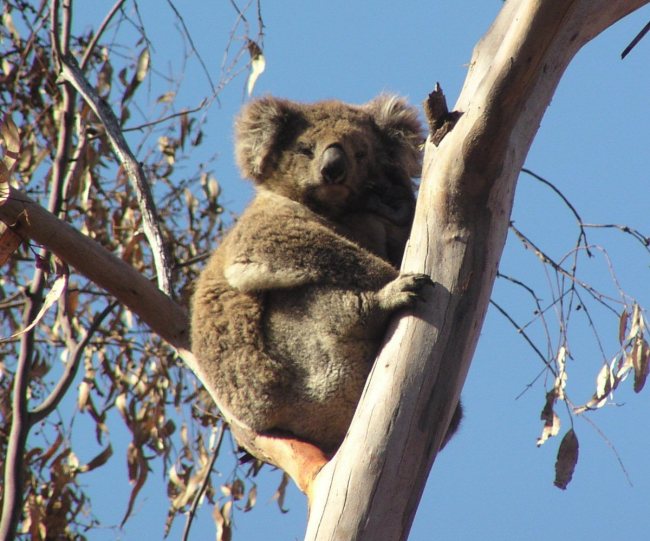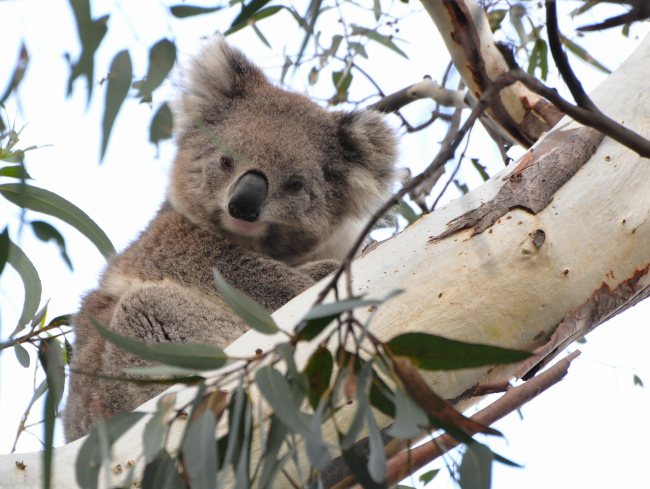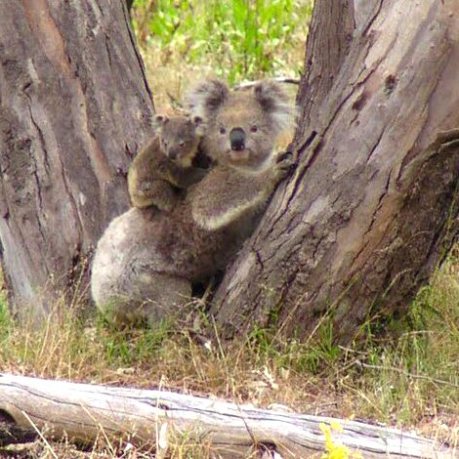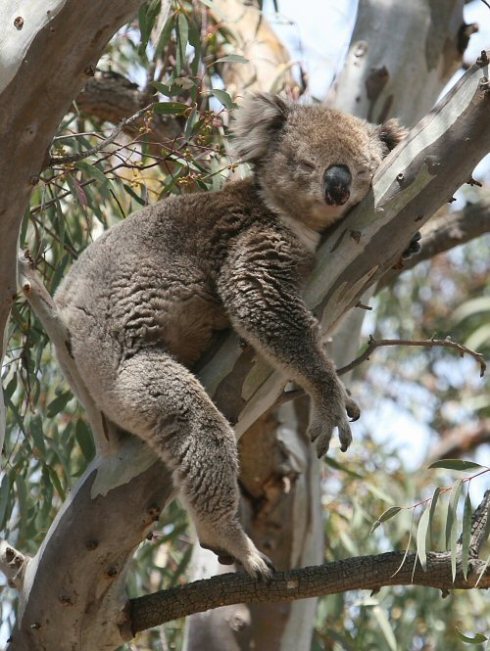Kangaroos have an amazing ability to turn quickly! They can achieve a 180 degree turn in a single hop, like this girl with baby on board, is doing here:
Their agility is partly due to their shape. Basically, they have big, strong hips! Their upper body, in contrast, is quite slim, light and flexible. They can twist from side to side, crouch, then straighten all without moving their back legs at all.
This arrangement makes a lot of sense. Unlike most grazing animals, kangaroos don’t need a long neck to reach the grass. We don’t know this for sure, but that could be advantageous: short neck = short distance from mouth to stomach = fewer muscles required to move food = less energy used.
Hopping as a means of locomotion probably also gives kangaroos an ability to turn “on a pinhead” which would be very useful for escaping predators. We don’t know of any terrestrial mammal that can turn as sharply as a macropod. With the centre of gravity at the pelvis, the kangaroo is a pivot that can almost turn on a point. Most land-based mammals have a long body, with their weight centred between the front and back legs. The length of the body limits the turning circle. In a way, they have to wait for their back legs to catch up. Also, the speed limits the turn – the faster they go, the harder it is for them to turn, and the more stress it puts on their legs, ankles and feet. We suggest that even at speed a kangaroo could turn very sharply without damaging their legs because most of the turn is executed while airborne.
Check out these two pictures. I found this big male sleeping in the sun. We saw each other suddenly, when I was only metres away from him. He quickly scrambled upright, but was facing me:
then he was off, bounding away from me a moment later:
Note how his back legs are at different positions here. The leg closest to us is has come further off the ground as the turn is executed. Just after this, while airborne, the legs re-aligned so that the next time he touched the ground both legs were in sync.
Interesting, hey?
References: Fauna of Australia: 29. Macropodidae, I.D. HUME, P.J. JARMAN, MARILYN B. RENFREE & PETER D. TEMPLE-SMITH
